Native Advertising: Content Chameleon
Brands are constantly striving to find new and improved ways to interact with their consumers. But in a world full of irritating pop-ups and banner ads, how can you reach your target audience without annoying them?
One way is through Native Advertising.
What is Native Advertising?
It’s currently one of the most common forms of (relatively) non-intrusive digital advertising. It is a type of paid-for, or sponsored, promotion where the ad itself blends with the platform, or media format on which it sits. An example is when you’re scrolling through Facebook and something like this pops up in between posts on your news feed...
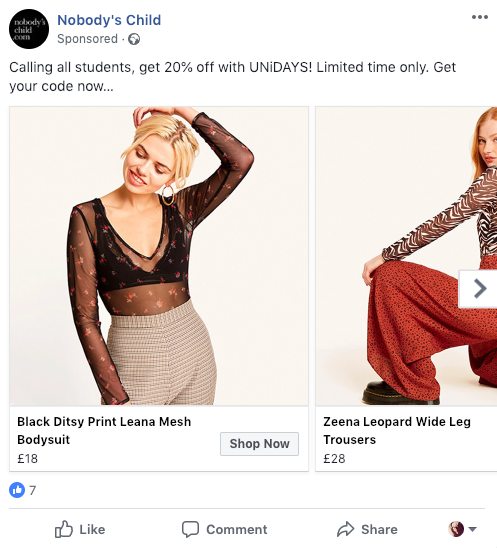
That’s native advertising. It looks like a normal Facebook post, but it’s actually sponsored content. And it’s probably got something to do with that clothes website you were looking at earlier...
You might be thinking that native advertising is a brand new concept, put in place to clutter your browser. But it’s actually there to declutter your browsing experience, and it’s been around for longer than you’d think. Around 100 years to be exact. Native advertising began with brands telling stories, rather than pushing products, in newspapers and magazines in the form of an advertorial [editorial + advertisement]. But, whilst the premise has stayed the same, native advertising has come so far and changed a lot since then.
Native advertising in the digital world has become so prevalent due to ‘banner blindness’. Banner blindness is when consumers ignore content that is or resembles, pop-ups and banner ads. Like a billboard on the side of the road: Unless it’s relevant, vibrant or remarkable, you’re not going to look at it. To combat banner blindness, brands and marketers have to make their promotional methods either completely in-your-face, which can be super annoying for consumers, or extremely tailored to the individual, which is achieved through personalisation.
Native advertising is different to normal digital advertising in that the ad doesn’t appear as a pop-up, banner, or at the top of your Google search page. Instead, they appear within the content itself. Native ads are designed specifically to not look like traditional advertisements and in doing so, consumers interact 20-60% more with native ads than with the likes of traditional online advertising.
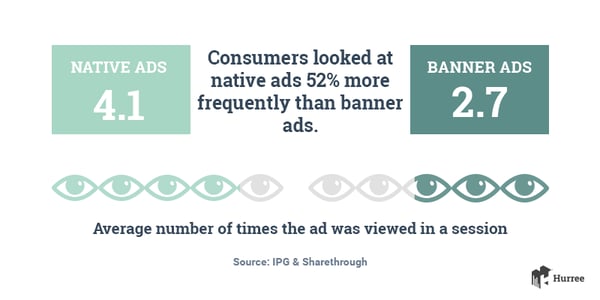
Native Advertising and Content Marketing
Native advertising is often thought of as being the same as content marketing. Whilst that’s not true, you can see why people would think this. Native ads are often written by content marketers and they are, by nature, visually similar to the content surrounding them. That’s kind of their thing. Additionally, they can, and always appear to, bring added value to the content. However, native advertising is still paid advertising and their overall goal is to promote or sell a brand, product or service.
Native ads are often tough to spot, especially if you’re scrolling through an online magazine or news site. Take Quora, the question-and-answer website, for example:
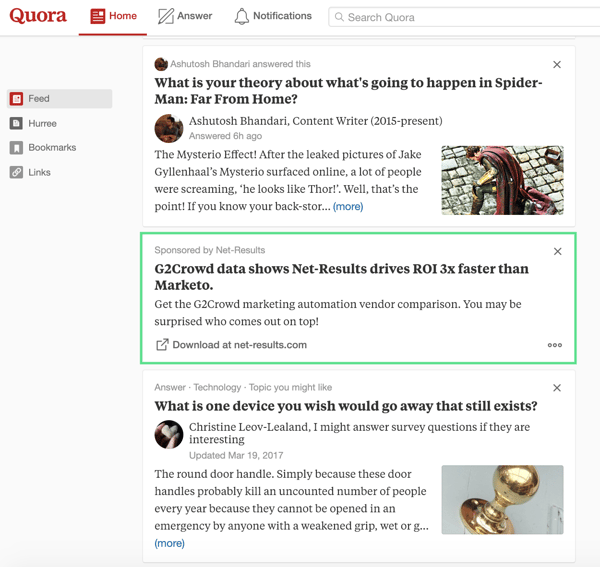
At first glance, this looks like a normal feed full of relevant content. But when you look a little closer, also note the green box I’ve added just to be clear, you notice the native ad. The ‘sponsored’ tag may give it away, but essentially it just looks like another article you might like to read.
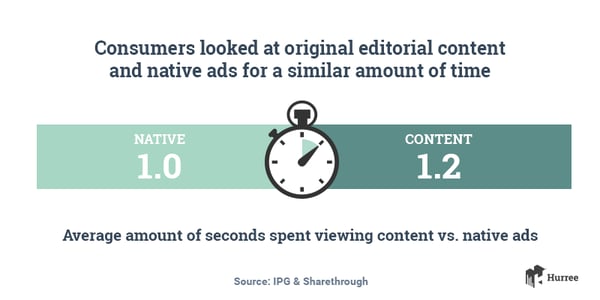
While native ads are not content marketing, they look almost identical to a site's content, they have the potential to add value to your browsing, and they rarely intrude on users’ online experiences.
What about ad-blocking?
Ad-block is simply a piece of software that is installed, generally onto a browser in the form of an extension, to prevent advertisements from appearing on a web page. It’s so widely used because consumers want to have control over what they’re exposed to online, i.e. they really don’t like pop-ups.
But I’ll let you in on a little secret… whilst ad-blocking will stop some native ads, it doesn’t extend to all of them. And that’s why a lot of brands and marketers incorporate this form of (mostly) unobtrusive advertising into their marketing strategies.
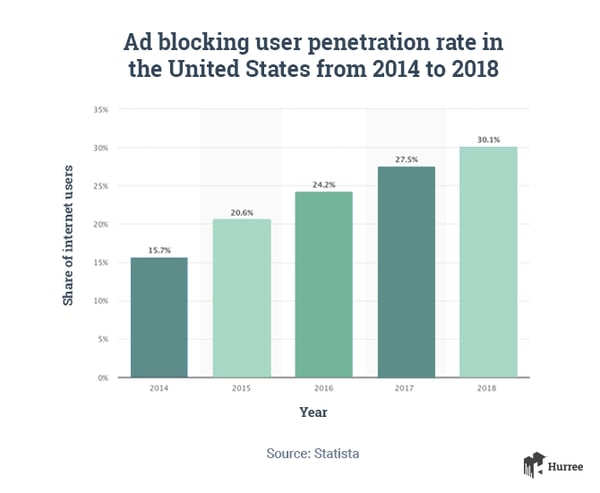
Native ads rarely disturb user experiences, therefore they don’t tend to bother consumers as much as traditional digital ads. And, after all, isn’t a great user experience something that we all strive for? Justin Choi, founder and CEO of native advertising platform Nativo, put it like this…
- Justin Choi, President & CEO of NativoIf native becomes an irritable form of advertising, if any advertising becomes irritable and delivers a bad experience, there’s going to be an adblock for it. Advertisers are now on board with wanting to deliver good user experiences to consumers.
The increase in exposure to native advertising, the relevancy of the content and the ad’s ability to blend in seamlessly with media formats has led native ads to be successful, and avoid of ad-blocking software.
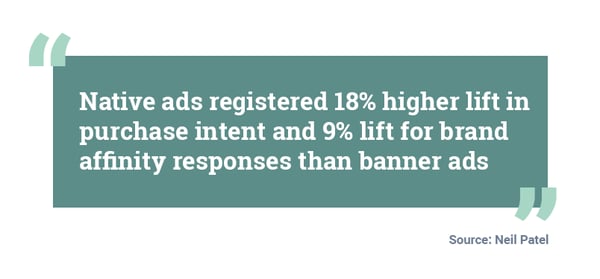
Who’s doing it well?
Not all brands completely get the hang of native advertising. However, there are some who execute it perfectly. But how can you tell? If the ad is camouflaged well and, once clicked on, offers consumers value, then it’s successful. That being said, there are some media outlets that simply do it better than others. So here are 3 brands that we think are doing a top-notch job when it comes to seamless ad experiences: Instagram, Yahoo and Buzzfeed.
1. Instagram
Instagram is a social network owned by Facebook, and it’s a great example of native advertising done right. To start with, all Instagram content is highly visual - it’s literally all pictures - from the feed and the stories to the personalised content you see when you hit the search feature. Therefore it comes as no surprise that Instagram finds itself within our top 3. Their platform-mimicking and use of highly visual sponsored content is uncanny...
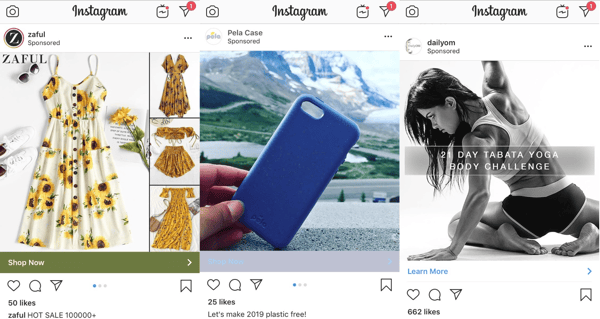
This is partly because Instagram target their ads. Yep, that’s right. The social network giant use targeting based on location, demographics, interests and online behaviours. That’s why you’re so tempted to click on all that lovely sponsored content. Instagram fully embraces personalisation in that almost every ad seen by a consumer will be related to something they search for or like. The brand know their users well, and they also know that their native ads are likely to see engagement because the content offered is just so relevant to the viewer.
Related content: The S.M.A.R.T. Guide to Market Segmentation
2. Yahoo
Yahoo is one of the biggest search engines going, and one of Google’s top competitors. Similar to Instagram, Yahoo also uses targeted advertising. They do, however, offer the consumer ad viewing options and preferences which improves user experience... and also aids Yahoo in their personalisation efforts. With the Ad Interest Manager, consumers are able to control the kinds of ads they see when, or if, they visit Yahoo.
Unlike a lot of clickbait-style ads, Yahoo’s sponsored content is almost identical to their organic content. Have a peek…
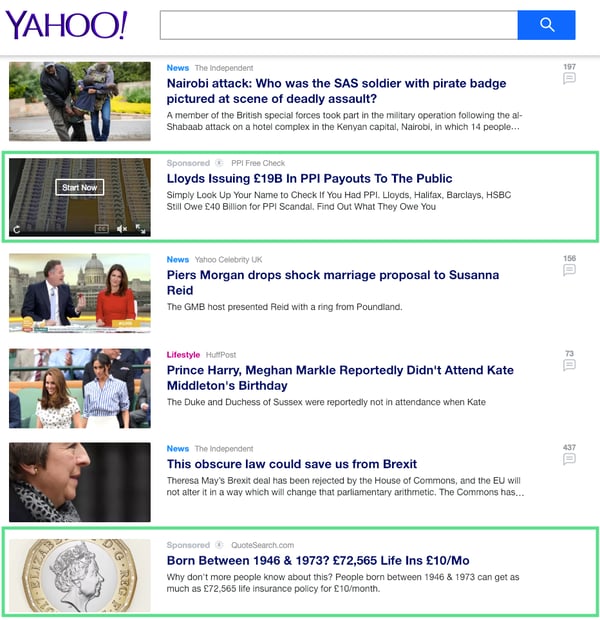
As you can see, the sponsored posts are almost indistinguishable from the other articles and are well embedded within the genuine content. The native ad is only identifiable because of the very faint ‘Sponsored’ tag above the bold headline. Well done, Yahoo. Well done.
3. Buzzfeed
It would be fair to say that a huge portion of Buzzfeed’s front page is made up of native advertisements. The NYC-based digital media and news company thrives on sponsored content. Take a look at this post…

This piece of sponsored content hosts the headline “Expectation Vs. Reality” - a title that refers to a series of memes that were popular back in the day. This playful, animated format instantly mimics Buzzfeed’s normal style, and a reader would be forgiven for not realising that this is sponsored content. But if you look closely, you’ll notice that the article is sponsored by Cancer Research UK.
Almost all of Buzzfeed’s native advertising is virtually undetectable. This is why the brand is one of the most successful viral hit factories on the web.
Drawbacks and benefits?
At first glance, native advertising appears to be the answer to all of your questions. But it’s not that simple. As with most forms of advertising, consumers often feel that their experiences are being interrupted, which can be annoying. Native ads are clearly less in-your-face, but this is something that consumers still have an issue with. Because native ads aren’t obvious, some people feel like they’re still being tricked or deceived, which is detrimental to a brand’s reputation.
Nevertheless, the majority of consumers don’t mind native advertising and by offering personalised content, the viewer may find that the targeted content is actually valuable. For brands and marketers, native ads can offer a huge increase in interaction, brand loyalty and ROI.
Conclusion
Native ads can be a wonderful thing. They offer brands and marketers a higher level of reader attention and barely interfere with a consumer’s online experience. If a native ad is well placed and offers the user good content, brand affinity can be strengthened and influenced. It has been proven that native advertising is an effective approach to marketing in its versatility, capacity to break through the noise of modern advertising and overcome banner blindness. One of the most impressive features of native advertising is its ability to effectively don the look of almost all media formats to create a personalised, seamless ad experience for consumers.
Native ads are the way forward when it comes to online promotion and optimising user experiences. But still, no one really wants to be inundated with irrelevant or uninteresting clickbait. So if you are thinking of using native ads in your marketing strategy, make sure your intentions are good and content is on-point.
Discover how to become a human experience-centred brand with your free guide: CX, UX, HX: How to Become a Human Experience-Centred Brand 🧠 Don't hesitate to get in touch via contact@hurree.co with any of your questions or comments you may have!
Share this
You May Also Like
These Related Stories
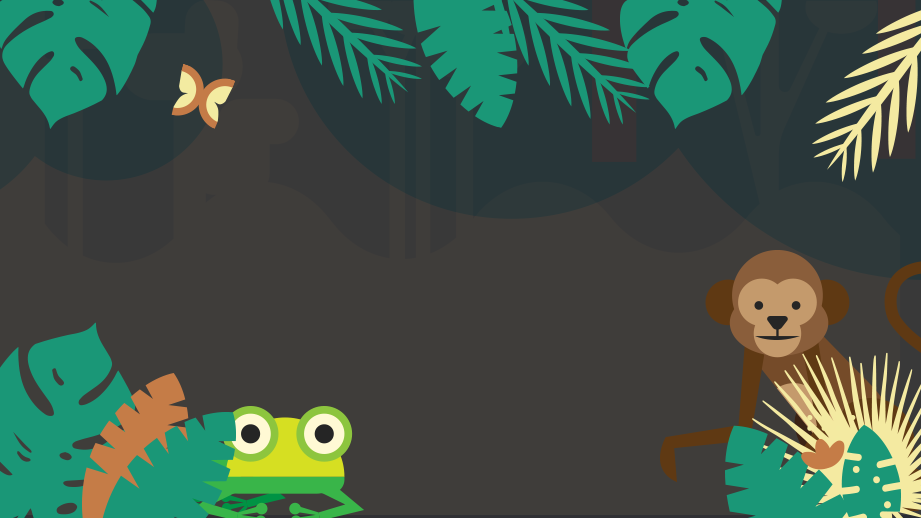
[Infographic] Native Advertising: Content Chameleon

How to Create SMART KPIs


